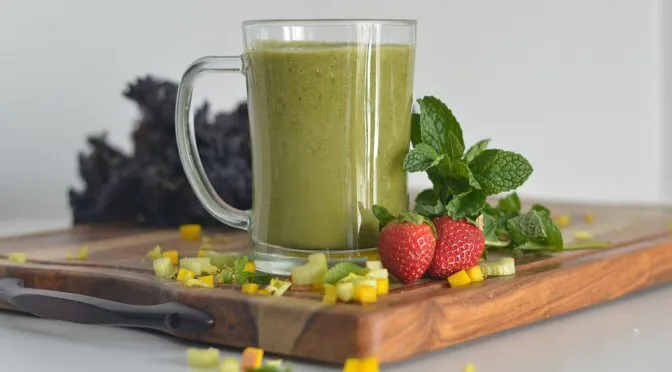‘Health-conscious’ has become a buzzword across healthcare and food and beverage landscape, thanks to the epidemic proportions of the obesity crisis and other rising health associated concerns, which has caused people to become conscious about their eating choices. This is prompting consumers to shift from colas to healthier options such as smoothie and juice. Smoothie and juice drinks made by world’s leading smoothie companies are all the rage these days owing to their health-promoting benefits and an increased variety of products available in the market. However, one question that is often raised by health-conscious consumers and which is always up for a debate; What’s better and healthier, smoothies or Juices?
Smoothie and juice seem like the same things or at least very similar. They both play a pivotal role in health and wellness and the major reasons for consuming these beverages center on nutritional benefits such as detox cleansing, weight loss and a sincere desire to get more veggies and fruits into a daily diet. But, are they both same? While both the drinks are produced with vegetables, fruits, and other healthy ingredients, there are perhaps some significant differences between the two. Here in, we will discuss the benefits of consuming each of these beverages thoroughly and substantiate it with the market research insights penned by analysts at Technavio.
The Size of the Global Smoothie and Juice Market
The smoothies and juice market has taken the world by storm over the past few years. According to the market research report compiled by industry experts, the global juices market is expected to grow to almost US$ 185 billion by 2021 and the smoothies market will reach a market revenue of more than US$ 22 billion in the next five years. The countries in the APAC region are dominating the global market for smoothies and juices and is expected to continue to contribute the largest portion of market share over the next five years.
Smoothies- Pros and Cons
The smoothies are the drinks that are produced through the process of blending liquid, vegetables, fruits, and other healthy ingredients into a puree. Smoothies are everywhere today and are much touted as a wonder drink which is advertised as a post-workout booster, make-at-home treat, or a meal replacement option. Smoothies are mostly considered as a win-win food for people to fill nutrition gaps, especially for those who don’t like eating fruits and vegetables, which is perhaps the primary benefit of consuming smoothies that are laced with natural ingredients.
The blending process of fruits, liquid, and vegetables to produce smoothies help preserve dietary fiber, unlike juices, and hence, can offer an extra boost of minerals, vitamins, antioxidants, and phytochemicals, as it often includes fruit skin. In addition, smoothies are loaded with superfoods and other filling ingredients which makes it a perfect meal replacement option for breakfast or lunch snacks. Consequently, the convenience offered by them is one of the major benefits of smoothies, which makes it a better choice than juices.
Although smoothies are healthier than milkshakes that contain synthetic ingredients, they are also filled with hidden nasty ingredients that perhaps are not appropriate for the human body. Smoothies are laced with unhealthy sweeteners such as processed sugar and high fructose corn syrup (HFCS) that are abundant to create negative health effects. A blend of these ingredients is considered to have more health impact than sugar. This is something which is proving to be challenging for upstarts and top smoothie companies in the world.
Juices – Pros and Cons
While juicing comparatively is not a new concept like blending, it is becoming trendy and popular yet again. Juicing has its own set of advantages and disadvantages when it comes to health aspects. The extraction of juice from vegetables and fruits through the juicer results in a liquid that contains most of the minerals, vitamins, and plant chemicals (phytonutrients) present in the whole fruit. Nevertheless, the process of juicing purges the pulp and filters out most of the healthy fiber, resulting in the loss of much of the benefits of fruits and vegetables.
Loosening up on insoluble fibers after the process of juicing can also prove to be advantageous for consumers in terms of digestion. The lack of fibers makes it easy for the digestive system to absorb the nutrients of fruits without having to work hard on breaking down the food. In fact, the absence of fibers makes nutrients more easily accessible to the human body in higher quantities than whole fruits and vegetables. Nutrients provided by juices protect people against cancer, cardiovascular diseases and various other inflammatory diseases such as rheumatoid arthritis.
These benefits of juices are triggering the consumer interest towards juices and related products and consequently boosting the growth of the global beverage industry. Needless to say, top juice brands in the world are cashing in the immense market opportunities.
Read more: Top 10 Juice Brands Leading the Global Juice Market 2018
Juicing Vs Blending – Take Away
Both juicing and blending have their own health benefits and downsides. However, if integrated thoughtfully into the diet, smoothies and juices both can play a valuable role in boosting the health. It adds nutrition and helps consumers reduce weight and overcome several health diseases. Nevertheless, smoothies tend to be more trending and popular with a wide range of ingredients available that can be blended to create nutritional and healthy smoothies.
Check this related market report for more industry insights in smoothie and juice market:



